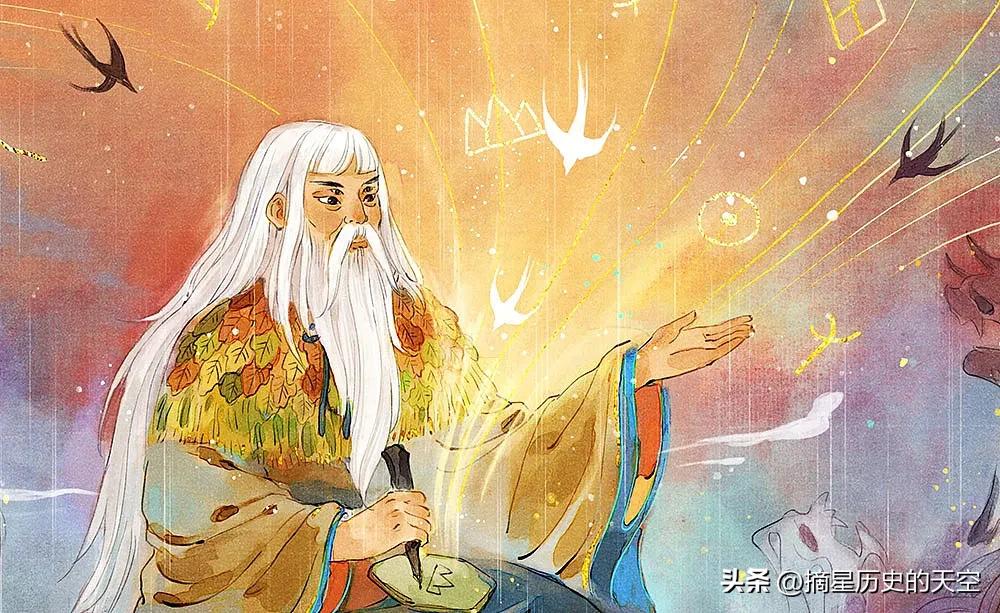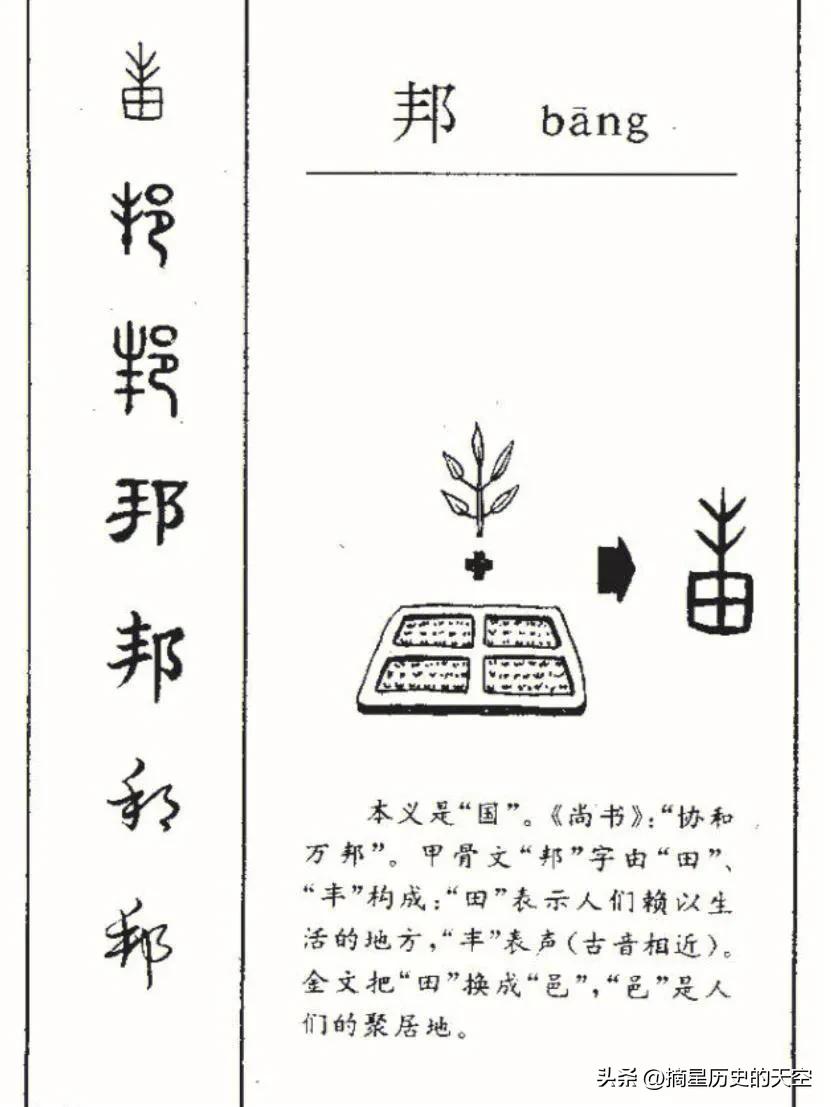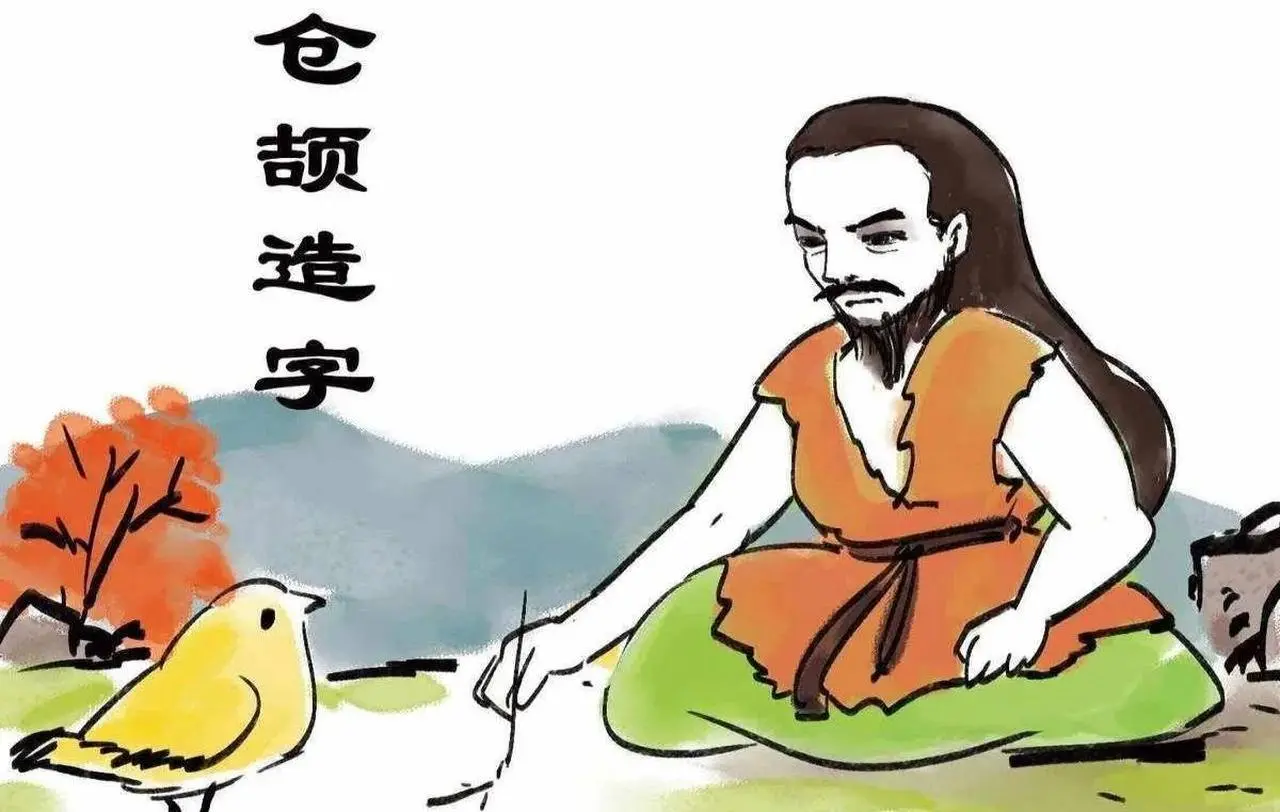Cang Jie (c. 26th century BC) is a figure in ancient Chinese legends and is considered to be one of the creators of Chinese characters. According to legend, he was an official in the Yellow Emperor's time, responsible for collating and recording information.
Legend has it that Cangjie observed images and symbols in nature such as celestial phenomena, birds, beasts, and plants, and created pictographs based on these images. He chose some basic graphic symbols to represent different objects and things, and these symbols gradually developed into a writing system in ancient China.

It is said that in the process of compiling the characters, Cangjie referred to the shapes of birds and beasts, the structure of the human body and other images in nature, and simplified them into symbols to represent the corresponding meanings. This kind of pictograph was first called "Six Books", including six basic forms of straight lines, horizontal lines, vertical lines, dots, oblique lines and curved lines. Later, these symbols continued to evolve and simplify, and gradually developed into the Chinese character system.
Although the legend of Cangjie's creation of characters is widespread in Chinese culture, archaeological research based on historical records has not provided conclusive evidence to support this legend. The origin of Chinese characters is relatively complicated, involving cultural evolution and changes in the form of characters in various ancient periods. Although we cannot be sure whether Cangjie is really the creator of Chinese characters, his legend and the production of pictographs related to him still have certain value and significance for the origin and development of Chinese characters.

After Cangjie created characters, Chinese characters, as a complex writing system, experienced a long process of development and evolution. The following are the main stages of the evolution of Chinese characters:
Oracle Bone Inscriptions Period (14th century BC - 11th century BC): Oracle bone inscriptions are one of the earliest Chinese characters, mainly inscribed on tortoise shells and animal bones. It is a type of pictograph, which expresses the meaning of things through patterns and symbols. Oracle bone inscriptions are mainly used for inscriptions and sacrificial records.

Bronze inscription period (11th century BC - 3rd century BC): Bronze inscriptions are an evolved form of oracle bone inscriptions, which gradually appeared in the late Shang Dynasty and Western Zhou Dynasty. Bronze inscriptions have begun to be simplified and standardized, making the writing of characters more standardized. At this time, the bronze inscriptions have broken away from the simple patterns of oracle bone inscriptions, forming silhouette symbols.
Xiaozhuan period (3rd century BC - 2nd century AD): Xiaozhuan is the product of the unified writing of the Qin Dynasty. It was the first large-scale writing and standardization in Chinese history, and it became the normative basis for later Chinese characters. Xiaozhuan is characterized by simplified stroke structure, forming a square shape with line beauty.
Lishu period (2nd century A.D.-5th century A.D.): Lishu is a derivative form of Xiaozhuan, which pursues the regularity and beauty of writing, and gradually develops into running script and cursive script. Lishu is mainly used in official documents and the art of calligraphy.
Regular script period (5th century AD - modern): Regular script is the main form of writing Chinese characters, pursuing norms and standards for writing. Regular script is the foundation of modern printed characters and the basic style of Chinese calligraphy.
It should be noted that the evolution process of Chinese characters is not linear, and there is a relationship of crossover and inheritance between different periods. At the same time, with the passage of time and regional differences, different glyphs and meanings will also change.
Today, Chinese characters have become the basis of the Chinese writing system, including traditional and simplified characters. The evolution of Chinese characters reflects the development of Chinese characters, as well as the inheritance and evolution of Chinese culture. As a unique and complex writing system, Chinese characters have had a profound impact on the daily life, cultural traditions and ways of thinking of the Chinese people.



Leave a Comment